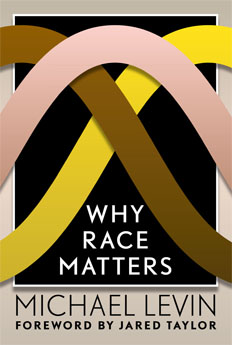The Pioneer Fund: Science Under Fire
Ian Jobling, American Renaissance, July 2003
Richard Lynn, The Science of Human Diversity: A History of the Pioneer Fund, University Press of America, 2001, 643 pp.
Although it is a small foundation that oversees a modest endowment and has no paid staff, the Pioneer Fund has, since its inception in 1937, changed the face of social science and the public understanding of race and human genetics. Without the Pioneer Fund, there would probably be very little scientific data on race differences in intelligence and behavior. Most of the major research in this area has been done by Pioneer grantees, such as Audrey Shuey, Frank C. J. McGurk, R. Travis Osborne, Arthur R. Jensen, J. Philippe Rushton, Linda S. Gottfredson, and Richard Lynn. Pioneer grantees such as Prof. Lynn, William B. Shockley, Seymour W. Itzkoff, and Daniel R. Vining have also done almost all the recent work on dysgenic fertility, and have been the most forceful advocates of eugenics in our times.
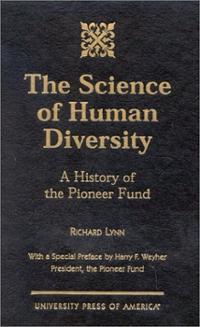
Pioneer also made possible Thomas J. Bouchard’s landmark Minnesota Twin Project, which showed that identical twins reared apart are vastly more similar than fraternal twins reared together. Although Pioneer did not finance Richard J. Herrnstein and Charles Murray’s The Bell Curve, this book relied heavily on the ideas and findings of the thirteen Pioneer grantees cited in it. As Prof. Jensen has said, “The name ‘Pioneer’ is indeed very apt.”
For its staunch and unyielding defiance of political correctness, the fund has drawn the abuse of journalistic and academic swastika-painters. This was especially true around the time of the publication of The Bell Curve, which may have publicized Pioneer-supported ideas more successfully than any other book in American publishing history. The Science of Human Diversity opens with a description of the media pogrom launched against the fund on ABC’s World News Tonight in 1994 by Peter Jennings, who spiced his commentary with pictures of emaciated victims of the Nazi camps. On the same program, journalist Greg Easterbrook called the fund “an Aryan crank organization,” and professional anti-racist Barry Mehler complained about its “dirty money.” Hysterical attacks of this kind have prompted picketing of Pioneer scholars, attacks by student groups, and abuse and obstruction by university officials.
Founders and Scholars
Although the 50-page preface by Harry F. Weyher, president of the fund from 1958 until his death in 2002, includes vivid portraits of a number of Pioneer founders and scholars, this book is mainly a summary of their work. Author Richard Lynn, an emeritus professor of University of Ulster in Northern Ireland, and a major grantee, also provides valuable information about the calumny the pioneers have suffered, and describes some of their disputes with intellectual adversaries.
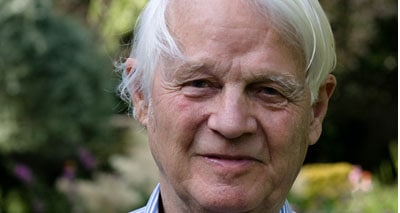
Richard Lynn
Persecution and hatred have been the result of Pioneer scholars’ powerful assaults on the great lie of this country’s intellectual and political elites: the lie that human nature could be molded to suit utopian political reformers. Assuming that human nature was infinitely malleable, these reformers believed they could eliminate racial divisions, make blacks equal to whites, integrate Third-World immigrants, abolish traditional sex roles, and otherwise rid American society of what they deemed to be backward prejudices.
Pioneer grantees stubbornly insisted on the biological obstacles to this utopian vision. They argued that social engineering could never overcome racial differences in intelligence and personality, that racial integration would fail because humans have a natural preference for their own race, that mass Third-World immigration was tantamount to white genocide, and that the elimination of traditional sex roles would have a devastating dysgenic impact on fertility. They maintained that biological problems require biological solutions, and that current social welfare programs encourage reproduction by the weak, the stupid, and the irresponsible. An improvement in the quality of a population requires a decrease in the frequency of undesirable genes and an increase in desirable ones. The wrath that has greeted Pioneer scholars is, in short, that of the charlatan and his dupes against the doctor who discredits quack cures and insists upon less palatable medicine.
Many of the scientific findings summarized in the book will already be known to readers of AR, but The Science of Human Diversity offers a wealth of detail on dysgenics, eugenics, and the biological bases of personality and race differences. This book also impresses on one’s mind just how long the basic facts about race differences have been known and how long the academic establishment has refused to recognize them. Certainly, this refusal has been unforgivable since at least 1958, when Audrey M. Shuey produced her encyclopedic The Testing of Negro Intelligence.
Wickliffe Draper
The main force behind the establishment of the Pioneer Fund was Wickliffe Preston Draper, born in 1891, and heir to a fortune made in textile machinery. Draper’s life was characterized by a relentless thirst for knowledge and adventure. As a young man, he traveled on horseback through Mexico and witnessed the Zapatista revolution. Later, he did anthropological and archaeological research in Africa. He served in both World Wars, in the first as an artillery soldier and in the second as an intelligence officer in India.
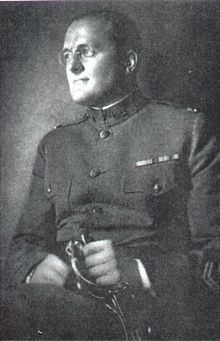
Wickliffe Preston Draper
Draper’s overriding intellectual interest was dysgenic trends in Western populations. In 1928 he established the Eugenics Research Association Prize, awarded to scholars who wrote about dysgenic fertility, the decline of white birthrates, and racial differences. He also believed America’s greatness was made possible by racial homogeneity, and was a strong supporter of the 1924 Immigration Act, which privileged the immigration of Northern Europeans. He supported activist groups that wished to repatriate blacks to Africa and that opposed racial integration. Draper also funded the work of two Congressional committees that opposed John F. Kennedy’s disastrous immigration reform in the 1960s.
Draper established the Pioneer Fund in 1937 with fellow eugenicists Harry H. Laughlin and Frederick H. Osborn. The Fund’s Certificate of Incorporation explained its objectives: First, it would provide financial assistance for the education of the children of parents who had “such qualities and traits of character as to make such parents of unusual value as citizens.” Especially to be aided were the descendants of the inhabitants of the original thirteen American colonies and those of “related stocks.” Essentially, Draper’s first goal was to pay gifted people of northern European descent to have more children. Second, Pioneer would fund the study of heredity and eugenics.
While the fund has been spectacularly successful in carrying out the second objective, the same cannot be said of the first. Pioneer has funded only one eugenic project, the Air Corps scholarship plan, which started in 1937. It began with a study of the fertility of officers in the US Army Air Corps (predecessor to the Air Force), who were thought to have the fitness, intelligence, courage, and character the fund wished to promote. This study found that the officers’ families were not replacing themselves, and that they wanted more children, but were restrained by financial considerations. The fund promised $4,000 for the education of every additional child born to families that already had three children. This assistance was provided only for children born in 1941, after which the plan was discontinued. Prof. Lynn estimates that it resulted in the birth of only seven children, and believes there were no more Pioneer eugenic programs because the Air Corps project proved how difficult and expensive they were.
Aside from their scientific work, fund recipients have opposed the racial integration forced on Americans since Brown v. Board of Education in 1954. Writing immediately after the historic case, Pioneer grantee Ernest van den Haag defended school and neighborhood segregation on the principle of free association. He argued that even if white preference for segregation were based on prejudice, prejudice is not illegal, and the Constitution gives the government no mandate to combat ideas. The policy of “compulsory togetherness” was more likely to exacerbate racial problems than solve them.
Writing in the 1960s, University of Hawaii philosophy professor A. James Gregor wrote that ethnocentrism was such a strong human attribute that it was unlikely racial integration would be successful. Anticipating J. P. Rushton’s “genetic similarity theory,” Prof. Gregor wrote that we prefer to associate with people of our own race because of innate aesthetic preferences. He wrote that feelings of racial identity emerge early in children, typically by the age of four or five, and that for this reason racial segregation is the natural human state. Prof. Gregor also found that racial integration lowered the quality of education because black/white differences in intelligence and behavior result in lower standards. He also noted that all-white communities are safer than mixed neighborhoods.
Prof. Lynn describes some of the silliness Prof. Gregor was combating. One opponent was psychologist Marie Jahoda, who claimed that racial prejudice was a form of psychological disorder. She argued that in thinking blacks were lazy, childish, and promiscuous, whites were projecting on them their own repressed urges, and that the only solution to this problem was forced residential integration. Prof. Gregor’s position was that “speculative gymnastics” of this kind “obscures the nature and character of social problems.”
Several other Pioneer scholars opposed integration. In the 1970s and ‘80s, University of Northern Iowa psychologist Ralph Scott reported that busing did not improve black student performance, and that even black parents overwhelmingly opposed it. He argued that racial integration was the reason American education compared poorly to that of other developed countries, since the main effect of school integration was to hold back gifted students.
In 1991, psychologist Lloyd G. Humphreys pointed out that many whites had fled to the suburbs to avoid racially integrated schools. He attacked the obvious hypocrisy of liberals like Senator Edward Kennedy, who advocates integration for public schools, but sends his own children to private schools. Rich liberals rarely support integration in their own neighborhoods, but insist on it for the lower classes.
An even more common target of fund recipients has been affirmative action. Prof. Humphreys called attention to lowered standards at Harvard Medical School, which began to let failing students take more repeat examinations, and stopped publishing students’ scores after it started letting in under-qualified minorities.
University of Delaware psychologist Linda S. Gottfredson, an expert on aptitude tests, helped abolish “race norming.” Introduced in 1981, this was a system of separate evaluation standards for different races on employment examinations. Prof. Gottfredson and her colleague Jan Blits point out that race norming gave blacks and Hispanics an unfair advantage; race norming was banned by the Civil Rights Act of 1991.
In his 1998 book Why Race Matters, Pioneer grantee and City College of New York philosopher Michael Levin demolished the premises of affirmative action and other forms of reparations: that whites have harmed blacks, who therefore deserve compensation. He pointed out that almost all African slaves were sold to whites by other Africans, and that the descendants of slaves enjoy a much higher standard of living than Africans. It is therefore not unreasonable to conclude that the slave trade benefited blacks. He argues further that in light of black criminality and destruction of housing stock, it would be more reasonable for whites to demand reparations from blacks.
As part of a detailed analysis of racial differences in intelligence and behavior, Prof. Levin applies his subversive common sense to the question of discrimination. If blacks are ten times more likely than whites to commit certain crimes, it is rational to be more suspicious of them. Likewise, it is no more reprehensible for an employer to deny a job to a black than it is for a landlord to refuse to rent a room to a motorcycle gang member, since blacks and Hell’s Angels are more likely than others to be criminals or behave obnoxiously.
Among Pioneer grantees, the most significant advocate of immigration reform has been ecologist Garrett Hardin, emeritus of University of California at Santa Barbara. Prof. Hardin estimated that the carrying capacity of the earth was reached during the last quarter of the 20th century, and that further population growth would lower the quality of life. In the United States and Europe, fertility is low, so whites would not suffer the ills of overpopulation unless there was immigration. He popularized the metaphor of the lifeboat: When the boat is full, no one else should be allowed on board. Letting on more is a perverse variant of compassion that will sink the boat.
Prof. Hardin also wrote that Western societies practice a strange reversal of ethnocentrism that he called “ethnofugalism:” “that which is foreign and strange, particularly if persecuted, [has become] the ideal.” He noted that, like the citizens of Beirut, we are not likely to find it ideal for long. That city, once called the Paris of the Mediterranean, was torn apart by ethnic conflict. Prof. Hardin believes immigration is genocide, albeit of a relatively bloodless kind. Genocide is the elimination of one people by another, and is inevitable when highly fertile non-white immigrants arrive among less fertile whites — it displaces natives even when immigrants are not especially fertile.
Several fund recipients have proposed eugenic improvement of the American population. The outstanding figure in this field was William Shockley, the colorful Nobel Prize-winning physicist, who became a tireless advocate of eugenics, after realizing the dangers of dysgenic fertility. He said he was converted by a news story about a teenager who blinded a delicatessen owner during a robbery. The criminal was one of 17 illegitimate children of a woman with an IQ of 55 who could remember the names of only nine of her children. The robber himself had an IQ of 65, and Dr. Shockley was horrified to think that some day such people might become a majority in America.
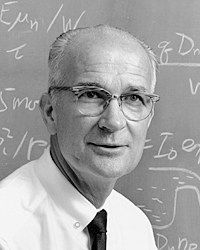
William B. Shockley
Dr. Shockley proposed several eugenic policies, one of which has already been put into effect: the establishment of sperm banks for gifted donors. Some of his other ideas were very imaginative. He proposed that people with below-average IQs be paid to be sterilized. For every point below 100, they would receive $1,000, so someone with an IQ of 90 would get $10,000, and one with 70 would get $30,000. He also proposed that girls be fitted at puberty with contraceptives that could be removed only by a doctor. Every woman would have a license for 2.2 children and would have to buy the licenses of other women if they wanted more. Dr. Shockley predicted that poor women would sell their licenses to rich women, which would skew fertility toward superior people.
Another eugenicist Pioneer grantee is Seymour Itzkoff, psychology professor at Smith College. Prof. Itzkoff believes the quality of the population is declining because welfare raises the fertility of the poor, feminism encourages intelligent women to have careers rather than children, and because of Third-World immigration. He suggests that high-paying jobs be given preferentially to married men with families, that the tax code be amended to reward higher-earning people who have children and punish those who do not, that strong measures be taken to discourage illegitimate births, and that illegal immigrants be repatriated.
Although Pioneer grantees have been called many names, they have diagnosed the nature and causes of American social problems more accurately than conventional thinkers. Just as Profs. van den Haag, Gregor, Scott, and Humphreys predicted, the attempt to integrate America’s schools and neighborhoods has been a failure. Demographers tell us American neighborhoods are almost as segregated today as they were before the Civil Rights Act of 1964. Just this year, Harvard University scholars announced that schools are still highly segregated and are becoming more so. Forced busing has encountered fierce resistance and has been, for the most part, abandoned. Similarly, affirmative action programs in education are under attack for precisely the reasons Pioneer grantees have specified. The notorious under-performance of today’s students and the rise in prison populations suggest that Pioneer grantees have been correct about the declining quality of the population. The ever-increasing percentage of immigrant minorities in America and Europe confirms Prof. Hardin’s prediction of white genocide.
Fierce Resistance
Prof. Lynn points out that much Pioneer research has been pursued in the teeth of fierce resistance from academics. In the 1990s, three universities refused to accept Pioneer grants made to their scholars because of negative publicity about the fund. In only one case, that of Hans J. Eysenck of University of London, was this refusal allowed to stand. In the two other cases, those of Linda S. Gottfredson and Seymour Itzkoff, the refusals were overturned by the courts. Universities have also tried unsuccessfully to revoke tenure and dismiss Prof. Rushton and Prof. Levin.
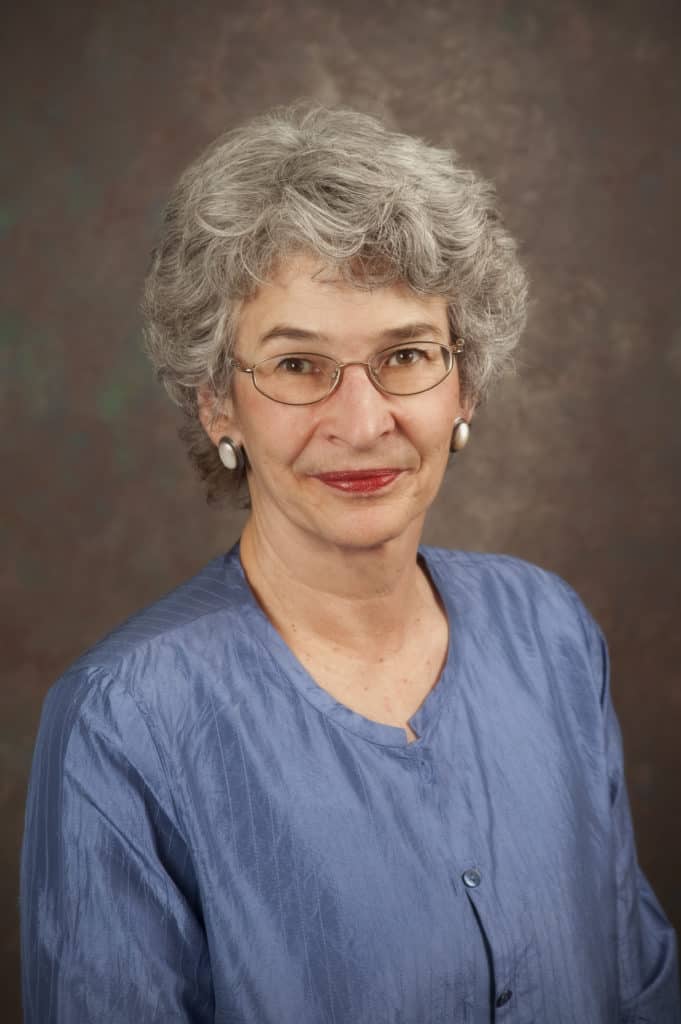
Linda Gottfredson
Universities have tried to repress Pioneer-funded research with threats and red tape. Courts have eventually enforced most university obligations, but litigation ties up scholars’ time and is a huge worry. Prof. Levin’s and Prof. Rushton’s ordeals are well summarized in Samuel Francis’s essay in The Real American Dilemma, but Linda Gottfredson’s case is just as interesting, and reveals much about the current university mentality. Trouble began in 1989 when a linguistics professor at University of Delaware wrote a letter to the dean complaining that the fund that was aiding Prof. Gottfredson sponsored racist research. In 1990, Prof. Gottfredson got menacing calls from university officials calling her a “lightning rod,” and advising her to get a lawyer. The university then refused to administer the Pioneer grant, claiming that the fund’s aims and the research it sponsored were “clearly and unambiguously in conflict with the University’s commitment to racial and cultural diversity.” Administrators told Prof. Gottfredson that if she found some independent way of receiving Pioneer money, she could not use university facilities, and it would not count towards her research requirements. It took two years of litigation to overturn the university’s strictures.
Besides being harassed by their universities, many scholars have been picketed, hectored, and physically attacked by radical groups. Students invaded and vandalized Seymour Itzkoff’s office and attacked his home. Radicals have demonstrated noisily at Profs. Lynn’s, Jensen’s, and Eysenck’s classes.
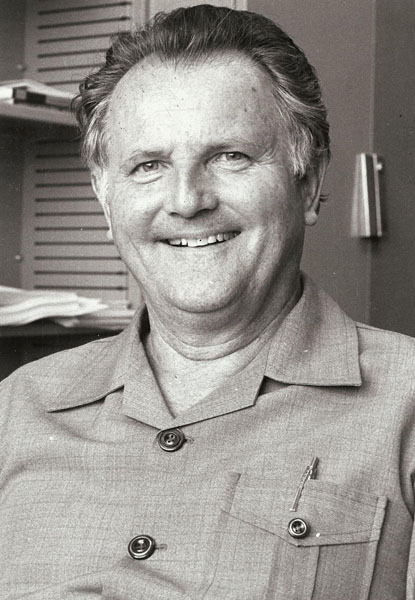
Arthur Jensen
A more insidious and effective method of silencing scholars is to refuse to publish their work. Audrey M. Shuey’s carefully researched The Testing of Negro Intelligence could find no publisher until Draper financed the book in 1958. Eight publishers turned down Prof. Jensen’s authoritative The g Factor before it was finally published in 1998, and Prof. Jensen has found that politically incorrect articles have to pass an unreasonably stiff review process. Many prominent journals search out reviewers who can find, or invent, some flaw in the methodology of any article that may be politically insensitive. Small presses are often the only ones that publish “insensitive” books, and may have to charge exorbitant prices.
Prof. Lynn is very optimistic about the future of the fund. He believes the public is becoming more open to IQ research and the evolutionary-genetic approach to human behavior because of the largely positive publicity behavioral and medical genetics have received in the press. Citing a positive 1994 New York Times review of The Bell Curve and of books by Prof. Rushton and Prof. Itzkoff, he says the tide has started to turn, and he looks forward with excitement to the next 60 years of Pioneer-funded research. Another reason to be optimistic about the future of Pioneer is that Prof. Rushton is its new president.
I hope Prof. Lynn is right. Widespread hostility has not so far stopped Pioneer scholars from stating their ideas, but it may well have discouraged younger scholars from pursuing these topics. All of the currently living Pioneer grantees are over 50 years old. One wonders how many young scholars are willing to take the risks the pioneers have taken. Prof. Jensen has noted that adopting the hereditarian position limits a Ph.D.’s job opportunities and can jeopardize promotions, honors, and grants. Even stating well-established findings about the nature of the races can be prosecuted as hate speech on some university campuses. The non-whites pouring into white countries have never been known for their commitment to free speech. Unless this tide is stopped, our country may cease to be one in which the Pioneer Fund and its grantees can continue to operate freely.

